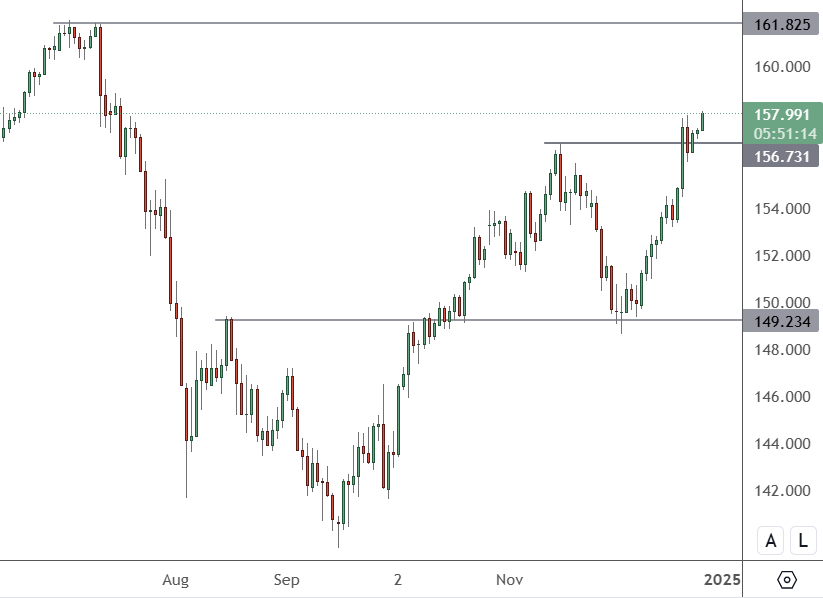The USDJPY exchange rate will start the trading day with a collection of economic data releases.

USDJPY – Daily Chart
The price of USD v JPY has moved above the 156.73 level and that brings the pair back into the view of the BOJ. After two interventions this year, traders have a short memory and longs would be risky.
Data begins on Friday at 7:30am HKT for the Japanese economy with CPI consumer inflation figures. Markets will be looking for any deviation on last month’s 2.6% figure, which was 2.2% in the expected food and energy reading. Anything higher could speed up the Bank of Japan’s plan for a rate increase.
Unemployment data is expected to come in at 7:50am with analysts expecting the 2.5% reading to remain. Industrial production is released alongside that with an expectation for a -3.4% reading after a positive 2.8% in the previous month. That number could be focused on by traders if it shows weakness in factories. However, the government has predicted that industrial output will return to full capacity in the next fiscal year.
With the latest move higher in the US currency, the pair is once again treading on dangerous ground. The BOJ intervened in the market back in May leading to a sharp sell-off. The bounce into November led to a pullback and traders are bidding the USD up to levels that will not please the central bank.
In the latest update, the government also said that Japan’s economy is expected to grow 1.2% in fiscal 2025, which starts in April. That is unchanged from its previous November forecast. The government maintained its view that personal consumption will remain strong due to higher wage growth and stable inflation, while exports are expected to improve due to a moderate pickup in overseas economies.
The government expects personal consumption, which accounts for half of the country’s GDP growth, to grow 1.3%, or an increase of 0.1 percentage point from the previous estimate. Inflation is expected to be anchored at the 2% target level.
For fiscal 2024, the government lowered its economic growth outlook to 0.4% from 0.7%, which was driven by lower vehicle production and China’s slowing growth. Weakness in the auto sector has led to a planned merger between car giants Nissan and Honda.


